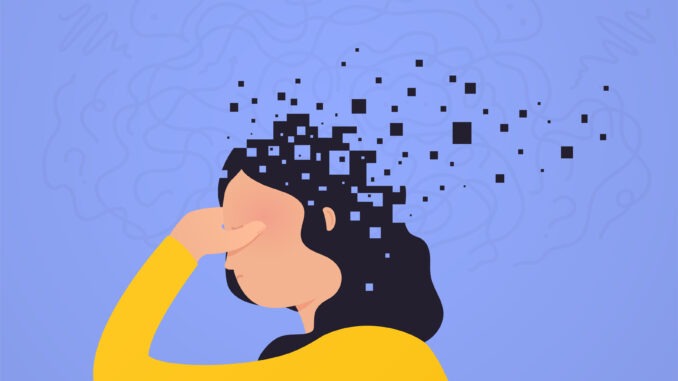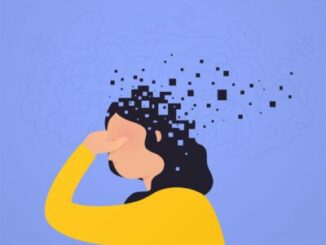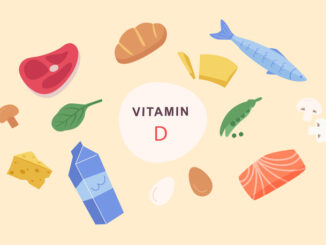
Anaemia is a common condition which occurs when the body has insufficient healthy red blood cells to carry oxygen round the body to supply the tissues
In essence, when a person has anaemia, there may not be enough red cells, or there may be insufficient haemoglobin (the compound which carries the oxygen) in the red blood cells – in some conditions there is a combination of both problems.
Red blood cells, also called erythrocytes, carry oxygen from the lungs to the tissues in the body, where it is combined with compounds which result in the release of energy with the production of carbon dioxide, which is also carried back to the lungs by the red blood cells.
Red cells develop within the bone marrow. During the 3-7 day development period, the primitive blood cells (called erythroblasts) fill with haemoglobin and form young erythrocytes, which are called reticulocytes. Once mature, red blood cells last for 100-120 days and there are 5.0-5.5 million red blood cells per cubic millimetre of blood in an adult human.
The haemoglobin in the cells is the protein which gives the cells their bright red colour. The cells are discoid with a thinner centre and, unlike white blood cells, do not have a nucleus. The shape allows them to distort to pass through very small vessels.
Anaemia may be mild or serious, and treatment depends on the cause – which can fall into one of three categories:
- Inadequate numbers of red blood cells are manufactured.
- Too many red blood cells are broken down by the body.
- There may be sudden, or slow and prolonged, loss of blood which cannot be replaced effectively.
Why does anaemia occur?
Commonly, anaemia occurs because there are inadequate vitamins or iron to manufacture enough fully-functional red blood cells. The most common is iron-deficiency anaemia, but it may also occur if there is inadequate vitamin B12 or folic acid which are involved in the normal formation of red blood cells. There are a number of reasons why this might occur:
- A diet poor in the necessary nutrients – perhaps through poverty or in vegans.
- A disease which compromises the absorption of the nutrients from the gut, such as Crohn’s disease or coeliac disease, or pernicious anaemia.
- An inadequate diet, as a result of pregnancy or chronic bleeding.
There are a range of other causes of anaemia, including diseases of bone marrow, kidney disease, the effects of drug therapy and diseases of the immune system.
The symptoms of anaemia
There are a variety of features which might indicate anaemia:
- Pallor – though looking pale is not a reliable indicator in all cases.
- Lethargy, lack of energy and weakness.
- Breathlessness on exertion.
- Dizziness and light-headedness.
- Cold hands and feet.
In more severe anaemia, other features may include:
- Cardiac arrhythmias or palpitations.
- Chest pain.
- Headaches.
Other clues might be persistent, excessively heavy, periods or the passage of tarry stools which could indicate bleeding from the bowel. Of course, any acute injury causing bleeding should be managed by transfer as quickly as possible to an A&E department.
An individual feeling fatigued without cause, or looking pale, should consult their GP; however, such symptoms are non-specific and may have a range of causes. Pregnant women are also at risk of developing anaemia. The GP will undertake a general examination and will normally arrange blood tests. The results may indicate a simple iron deficiency state, where iron supplementation is the appropriate approach. In other cases, although anaemia may be revealed, the cause may not be obvious. In such cases more tests may be needed or the individual may require referral to a haematologist (blood specialist) for elucidation of the diagnosis.
Treatment of anaemia
Treatment, of course, depends on cause; if it is not the result of simple deficiency, then the treatment may be of the cause resulting in the anaemia.Simple deficiency may require supplementation with one or more of iron, vitamin B12 or folate. Iron and folate are taken in tablet form but Vitamin B12 may be required by injection.
Once normal levels are restored, they can be maintained by having a diet rich in the components. Iron-rich foods include red meat, iron-fortified bread, green vegetables such as spinach and cabbage and some dried fruits such as raisins and prunes. Vitamin B12 is present in red meat and dairy products and fish such as salmon. Folate occurs in poultry and pork, green vegetables, brown rice and oranges.
In otherwise healthy people, a good diet should maintain adequate levels of iron and vitamins. However, for some people, such as women with persistently heavy periods or those with some bowel conditions where iron absorption may be impaired, it may be necessary to continue to take an iron supplement on a regular basis.
The approach to the anaemia in those patients who cannot be effectively managed with simple supplements will depend on the nature of the anaemia and its cause – in other words, if it isn’t a nutritional deficiency, or simple replacement is insufficient, then a way has to be found to overcome the issue, whether it is failure to manufacture enough blood cells or to stop them from being lost.
This may necessitate the use of drugs to stimulate the bone marrow to manufacture red blood cells; alternatively, regular blood transfusions may be necessary – sometimes more specific treatment with bone marrow transplants or immunosuppressive therapy is necessary to resolve or minimise the problem.
Anaemia is often missed and remains untreated. Anyone feeling tired without cause should get a simple blood test to check. For me, the most common symptom of anaemia is summed up in the well-known quote describing the condition, ‘It’s the kind of tired that sleep can’t fix’.



Be the first to comment